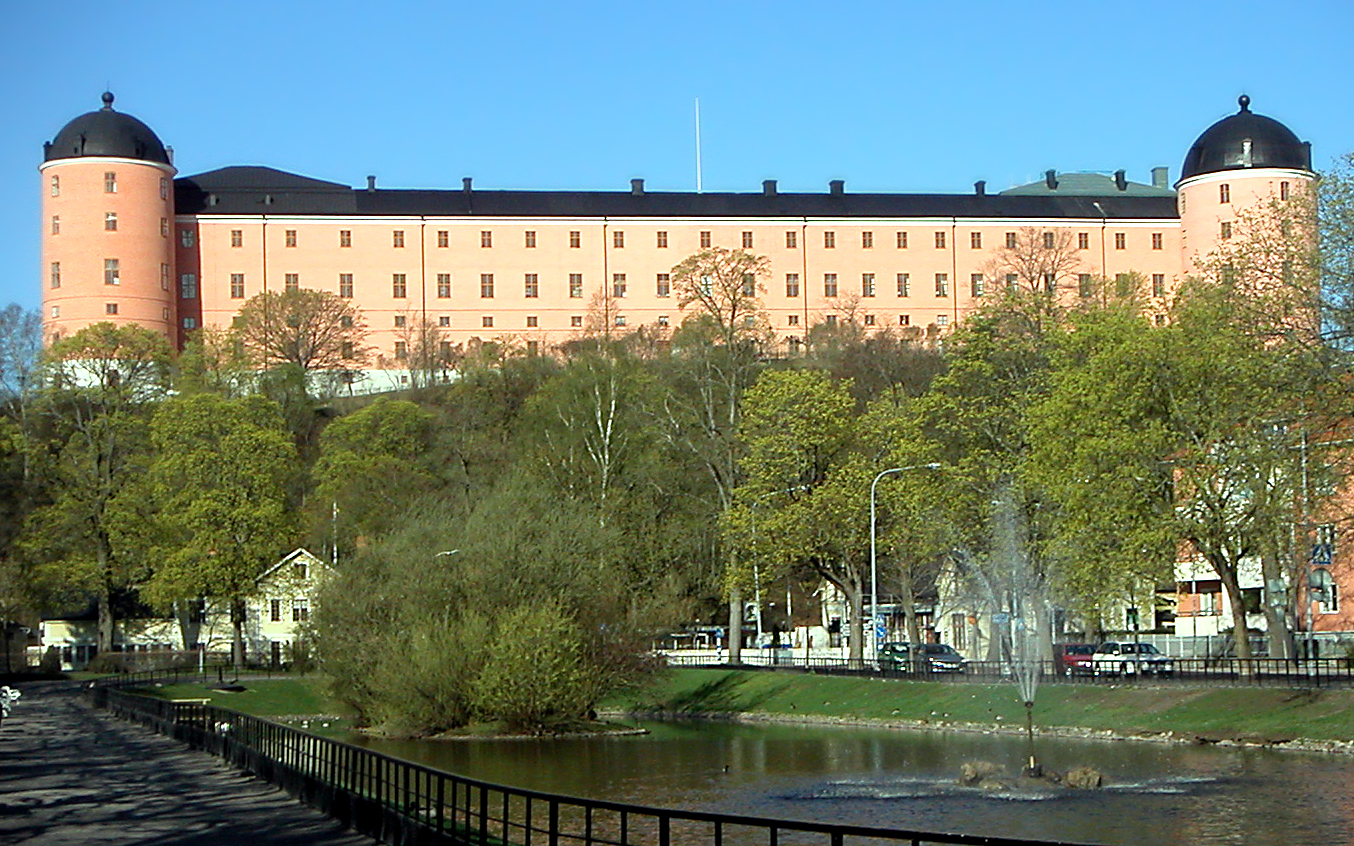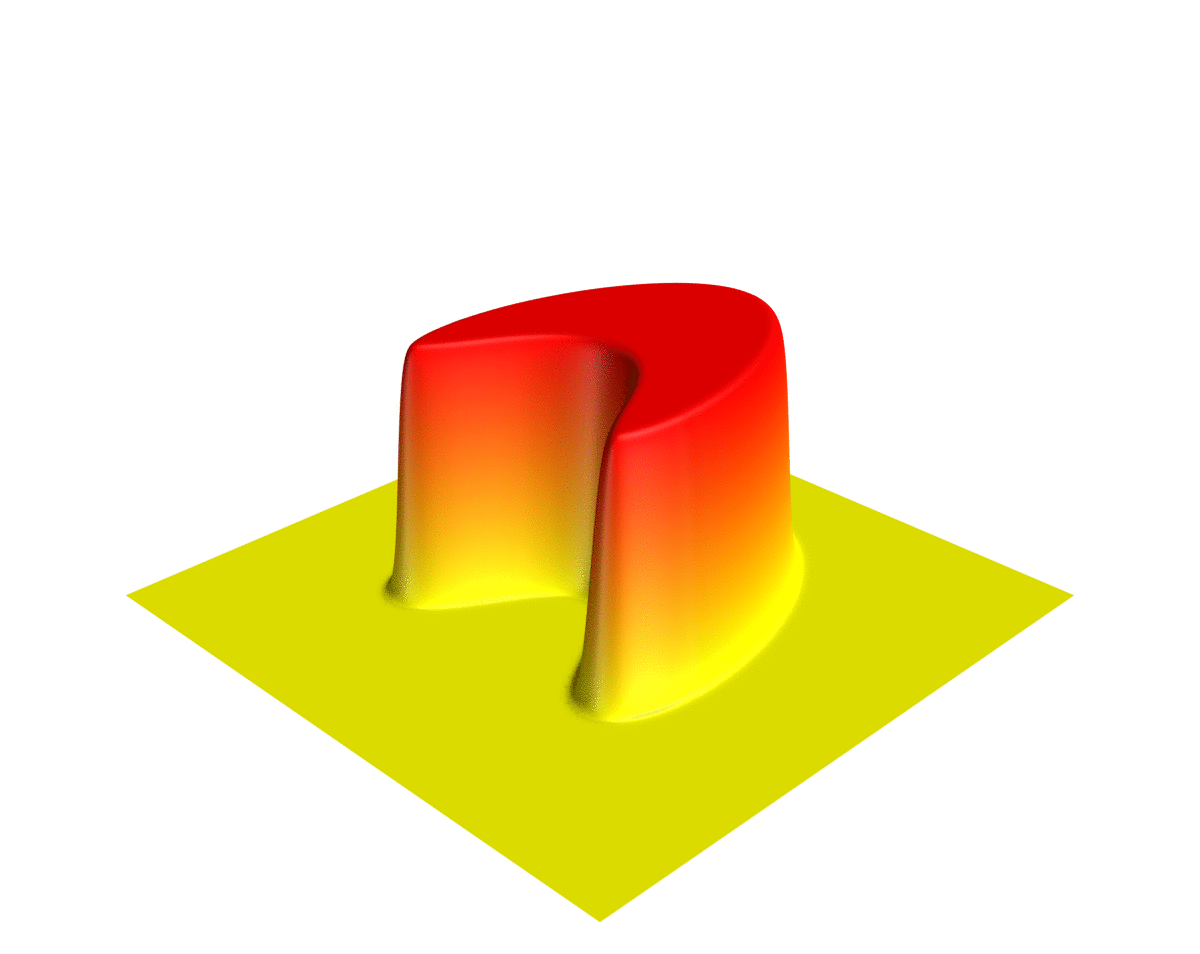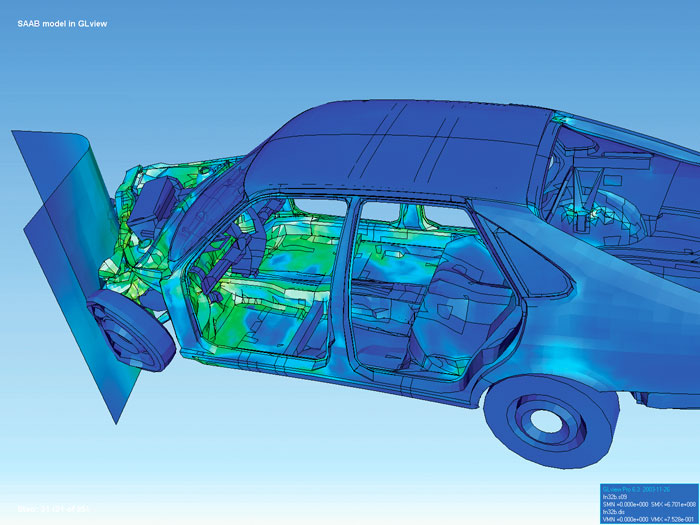|
Germund Dahlquist
Germund Dahlquist (16 January 1925 – 8 February 2005) was a Sweden, Swedish mathematician known primarily for his early contributions to the theory of numerical analysis as applied to differential equations. Dahlquist began to study mathematics at Stockholm University in 1942 at the age of 17, where he cites the Danish mathematician Harald Bohr (who was living in exile after the occupation of Denmark during World War II) as a profound influence. He received the degree of Licentiate (degree), licentiat from Stockholm University in 1949, before taking a break from his studies to work at the Swedish Board of Computer Machinery (Matematikmaskinnämnden), working on (among other things) the early computer BESK, Sweden's first. During this time, he also worked with Carl-Gustaf Rossby on early numerical weather forecasts. Dahlquist returned to Stockholm University to complete his Ph.D., ''Stability and Error Bounds in the Numerical Solution of Ordinary Differential Equations'', which ... [...More Info...] [...Related Items...] OR: [Wikipedia] [Google] [Baidu] |
Uppsala
Uppsala ( ; ; archaically spelled ''Upsala'') is the capital of Uppsala County and the List of urban areas in Sweden by population, fourth-largest city in Sweden, after Stockholm, Gothenburg, and Malmö. It had 177,074 inhabitants in 2019. Located north of the capital Stockholm, it is also the seat of Uppsala Municipality. Since 1164, Uppsala has been the ecclesiology, ecclesiastical centre of Sweden, being the seat of the Archbishop of Uppsala, Archbishop of the Church of Sweden. Uppsala is home to Scandinavia's largest cathedral – Uppsala Cathedral, which was the frequent site of the coronation of the Swedish monarch until the late 19th century. Uppsala Castle, built by King Gustav I of Sweden, Gustav Vasa, served as one of the royal residences of the Swedish monarchs, and was expanded several times over its history, making Uppsala the secondary capital of Sweden during its Swedish Empire, greatest extent. Today, it serves as the residence of the Governor of Uppsala County ... [...More Info...] [...Related Items...] OR: [Wikipedia] [Google] [Baidu] |
Matematikmaskinnämnden
The Swedish Board for Computing Machinery (, MMN) was a Swedish government agency which built Sweden's first computers: BARK and BESK. A governmental study into the need for computing machinery in Sweden had been conducted in 1947 by initiative of the Royal Swedish Academy of Engineering Sciences and the Naval Procurement Agency. The study recommended the immediate purchase of computing machinery from the United States and a budget of 2 million SEK was allocated for the purpose. The Swedish Board for Computing Machinery was established on November 26, 1948, to handle the purchase. , accessed on August 30, 2009 The Academy of Engineering Sciences had initiated some activities already in 1947 by sending five young engineers and scientists to research groups in the United St ... [...More Info...] [...Related Items...] OR: [Wikipedia] [Google] [Baidu] |
Helsinki
Helsinki () is the Capital city, capital and most populous List of cities and towns in Finland, city in Finland. It is on the shore of the Gulf of Finland and is the seat of southern Finland's Uusimaa region. About people live in the municipality, with million in the Helsinki capital region, capital region and million in the Helsinki metropolitan area, metropolitan area. As the most populous List of urban areas in Finland by population, urban area in Finland, it is the country's most significant centre for politics, education, finance, culture, and research. Helsinki is north of Tallinn, Estonia, east of Stockholm, Sweden, and west of Saint Petersburg, Russia. Helsinki has significant History of Helsinki, historical connections with these three cities. Together with the cities of Espoo, Vantaa and Kauniainen—and surrounding commuter towns, including the neighbouring municipality of Sipoo to the east—Helsinki forms a Helsinki metropolitan area, metropolitan are ... [...More Info...] [...Related Items...] OR: [Wikipedia] [Google] [Baidu] |
Hamburg
Hamburg (, ; ), officially the Free and Hanseatic City of Hamburg,. is the List of cities in Germany by population, second-largest city in Germany after Berlin and List of cities in the European Union by population within city limits, 7th-largest in the European Union with a population of over 1.9 million. The Hamburg Metropolitan Region has a population of over 5.1 million and is the List of EU metropolitan areas by GDP, eighth-largest metropolitan region by GDP in the European Union. At the southern tip of the Jutland Peninsula, Hamburg stands on the branching River Elbe at the head of a estuary to the North Sea, on the mouth of the Alster and Bille (Elbe), Bille. Hamburg is one of Germany's three city-states alongside Berlin and Bremen (state), Bremen, and is surrounded by Schleswig-Holstein to the north and Lower Saxony to the south. The Port of Hamburg is Germany's largest and Europe's List of busiest ports in Europe, third-largest, after Port of Rotterdam, Rotterda ... [...More Info...] [...Related Items...] OR: [Wikipedia] [Google] [Baidu] |
Peter Henrici Prize
The Peter Henrici Prize (; ; ) is a prize awarded jointly by ETH Zurich and the Society for Industrial and Applied Mathematics (SIAM) for "original contributions to applied analysis and numerical analysis and/or for exposition appropriate for applied mathematics and scientific computing". The prize is named in honor of the Swiss numerical analyst Peter Henrici, who was a professor at ETH Zurich for 25 years. Description The prize, initiated in 1999 with funds contributed by ETH Zurich, is awarded every four years. It consists of a certificate containing the citation and (as of 2023) a cash prize of $5,000 (US). The winner is chosen by a prize committee, consisting of four members, two members chosen by SIAM and two others by ETH Zurich. "The prize may be awarded to any member of the scientific community who meets the general guideline of the prize description." Award ceremony The award is presented every four years at the International Congress on Industrial and Applied Mathematic ... [...More Info...] [...Related Items...] OR: [Wikipedia] [Google] [Baidu] |
Society For Industrial And Applied Mathematics
Society for Industrial and Applied Mathematics (SIAM) is a professional society dedicated to applied mathematics, computational science, and data science through research, publications, and community. SIAM is the world's largest scientific society devoted to applied mathematics, and roughly two-thirds of its membership resides within the United States. Founded in 1951, the organization began holding annual national meetings in 1954, and now hosts conferences, publishes books and scholarly journals, and engages in advocacy in issues of interest to its membership. Members include engineers, scientists, and mathematicians, both those employed in academia and those working in industry. The society supports educational institutions promoting applied mathematics. SIAM is one of the four member organizations of the Joint Policy Board for Mathematics. Membership Membership is open to both individuals and organizations. By the end of its first full year of operation, SIAM had 130 me ... [...More Info...] [...Related Items...] OR: [Wikipedia] [Google] [Baidu] |
Linear Multistep Method
Linear multistep methods are used for the numerical solution of ordinary differential equations. Conceptually, a numerical method starts from an initial point and then takes a short step forward in time to find the next solution point. The process continues with subsequent steps to map out the solution. Single-step methods (such as Euler's method) refer to only one previous point and its derivative to determine the current value. Methods such as Runge–Kutta take some intermediate steps (for example, a half-step) to obtain a higher order method, but then discard all previous information before taking a second step. Multistep methods attempt to gain efficiency by keeping and using the information from previous steps rather than discarding it. Consequently, multistep methods refer to several previous points and derivative values. In the case of ''linear'' multistep methods, a linear combination of the previous points and derivative values is used. Definitions Numerical methods ... [...More Info...] [...Related Items...] OR: [Wikipedia] [Google] [Baidu] |
Partial Differential Equations
In mathematics, a partial differential equation (PDE) is an equation which involves a multivariable function and one or more of its partial derivatives. The function is often thought of as an "unknown" that solves the equation, similar to how is thought of as an unknown number solving, e.g., an algebraic equation like . However, it is usually impossible to write down explicit formulae for solutions of partial differential equations. There is correspondingly a vast amount of modern mathematical and scientific research on methods to numerically approximate solutions of certain partial differential equations using computers. Partial differential equations also occupy a large sector of pure mathematical research, in which the usual questions are, broadly speaking, on the identification of general qualitative features of solutions of various partial differential equations, such as existence, uniqueness, regularity and stability. Among the many open questions are the existence an ... [...More Info...] [...Related Items...] OR: [Wikipedia] [Google] [Baidu] |
Finite Element Analysis
Finite element method (FEM) is a popular method for numerically solving differential equations arising in engineering and mathematical models, mathematical modeling. Typical problem areas of interest include the traditional fields of structural analysis, heat transfer, fluid flow, mass transport, and electromagnetic potential. Computers are usually used to perform the calculations required. With high-speed supercomputers, better solutions can be achieved and are often required to solve the largest and most complex problems. FEM is a general numerical analysis, numerical method for solving partial differential equations in two- or three-space variables (i.e., some boundary value problems). There are also studies about using FEM to solve high-dimensional problems. To solve a problem, FEM subdivides a large system into smaller, simpler parts called finite elements. This is achieved by a particular space discretization in the space dimensions, which is implemented by the constructio ... [...More Info...] [...Related Items...] OR: [Wikipedia] [Google] [Baidu] |
COMSOL Multiphysics
COMSOL Multiphysics is a finite element analyzer, solver, and simulation software package for various physics and engineering applications, especially coupled phenomena and multiphysics. The software facilitates conventional physics-based user interfaces and coupled systems of partial differential equations ( PDEs). COMSOL Multiphysics provides an IDE and unified workflow for electrical, mechanical, fluid, acoustics, and chemical applications. Beside the classical problems that can be addressed with application modules, the core Multiphysics package can be used to solve PDEs in weak form. An API for Java and MATLAB can be used to control the software externally. The program also serves as an application builder for physics applications. Several modules are available for COMSOL, categorized according to the applications areas of Electrical, Mechanical, Fluid, Acoustic, Chemical, Multipurpose, and Interfacing. See also *Finite element method *Multiphysics In computational m ... [...More Info...] [...Related Items...] OR: [Wikipedia] [Google] [Baidu] |
Royal Swedish Academy Of Engineering Sciences
The Royal Swedish Academy of Engineering Sciences (, IVA), founded on 24 October 1919 by King Gustaf V, is one of the royal academies in Sweden. The academy is an independent organisation, which promotes contact and exchange between business, research, and government, in Sweden and internationally. It is the world's oldest academy of engineering sciences.(OECD Reviews of Innovation Policy: Sweden 2012). Leadership The King is the patron of the academy. The following people have been presidents of IVA since its foundation in 1919: *1919–1940: Axel F. Enström *1941–1959: Edy Velander *1960–1970: Sven Brohult *1971–1982: Gunnar Hambraeus *1982–1994: Hans G. Forsberg *1995–2000: Kurt Östlund *1999–2001: (temporary) Enrico Deiaco *2001–2008: Lena Treschow Torell *2008–2017: Björn O. Nilsson *2017–2023: Tuula Teeri *2024-Present Sylvia Schwaag Serger Academy member Each year, outstanding scientists and engineers from universities and industries ... [...More Info...] [...Related Items...] OR: [Wikipedia] [Google] [Baidu] |
Sergei Lozinskii
Sergius is a male given name of Ancient Roman origin after the name of the Latin ''gens'' Sergia or Sergii of regal and republican ages. It is a common Christian name, in honour of Saint Sergius, or in Kyivan Rus', of Sergius of the Holy Caves (Saint Sergius the Obedient of the Kiev Caves), one of saint Fathers of Kyiv, Saint Sergius of Radonezh, and has been the name of four popes. It has given rise to numerous variants, present today mainly in the Romance (Serge, Sergio, Sergi) and Slavic languages (Serhii, Sergey, Serguei, Srđan). It is not common in English, although the Anglo-French name Sargent is possibly related to it. Etymology The name originates from the Roman ''nomen'' (patrician family name) ''Sergius'', after the name of the Roman ''gens'' of Latin origins Sergia or Sergii from Alba Longa, Old Latium, counted by Theodor Mommsen as one of the oldest Roman families, one of the original 100 ''gentes originaria''. It has been speculated to derive from a more ancien ... [...More Info...] [...Related Items...] OR: [Wikipedia] [Google] [Baidu] |



